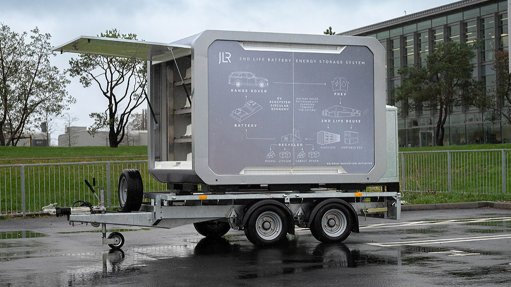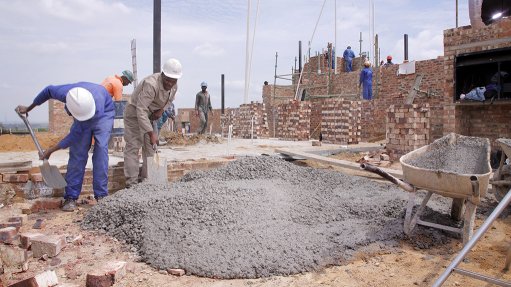SA’s Carbon Tax Has A Promising Start Amidst COVID and Economic Woes
This article has been supplied as a media statement and is not written by Creamer Media. It may be available only for a limited time on this website.
For the first time - on 29 October - South Africa’s large greenhouse gas (GHG) emitters had to pay their dues under the new carbon tax. Although COVID-related postponement of the June deadline to October gave government and the private sector additional time, there were concerns around successfully navigating the complex carbon tax processes and administrative systems.
Now that the dust has settled, it is apparent that despite teething problems that resulted in entities not being able to submit their tax returns on time, the submission process ran smoothly overall.
This was even the case for the most complex component of the tax, the so-called ‘offset allowance’.
Opportunity for Emitters
The so-called ‘offset allowance’ refers to a new process whereby tax liable entities can acquire carbon tax offsets (CTOs) on the open market to offset part of their taxable GHG emissions to reduce their tax liability.
“We have witnessed a massive uptake in first time carbon taxpayers acquiring CTOs to reduce their carbon tax liability,” comments Henk Sa, Partner at EcoMetrix Africa.
Opportunity for GHG mitigation projects
CTOs originate from local GHG mitigation projects, which fall outside the tax net. For example, a rural community that uses solar energy rather than coal to heat water could claim the resulting emission reductions under an international carbon standard like the Clean Development Mechanism (CDM) or the Verified Carbon Standard (VCS).
Once these standards have issued carbon credits to such a project, they can be brought into the local carbon market as CTOs, provided they meet the local eligibility criteria.
“For the first phase of the Carbon Tax (2019 -2022), the CTO market will be very short,” says Sa. “Total demand is estimated to be between 7 to 10 million CTOs per year, but the market only managed to provide just over 3 million CTOs for tax liable entities for the first carbon tax year. Even considering some flaws in the system that restricted supply and that the first year was actually only 7 months, there remains a massive gap between CTO demand and supply.”
Opportunity for New GHG Mitigation Initiatives
The second phase of the carbon tax (2023 – 2028) is expected to have an even more limited supply of CTOs.
The main reason for this is that old CDM and VCS carbon credits from before the start of the tax in June 2019 are not eligible in the second phase. In addition, it is uncertain how the CDM will continue after 2020 - if at all, while the scope of eligible mitigation activities under the VCS was drastically reduced when it recently moved from Version 3 to 4.
“All in all, supply from historic standards and projects is expected to become more uncertain and shrink, while demand will increase as more entities become liable for carbon tax and utilise the offset allowance component,” says Sa.
“Companies like ours, with a diverse CTO trading book, are looking to replace the diminishing supply and meet increased demand by exploring new project types in the forestry, agriculture and land sectors,” says Lodewijk Nell, Partner at EcoMetrix Africa. “In addition to this, new initiatives like Nature Based Solutions (NBS) are key to the development of the local CTO market.
“A local South African carbon standard is another key development to advance the CTO market and close the gap between demand and supply,” adds Nell. “Government is establishing a framework for assessing the environmental integrity of potential local carbon standards prior to having them adopted for the supply of CTOs into the local carbon market.”
Opportunity for Investors
Sa says that he has not seen this level of appetite for domestic or international investment into GHG mitigation projects in South Africa since before the financial crisis back in 2007. “From an investment point of view, a CTO price of above 100 ZAR/CTO in 2019 increasing by inflation plus 2% year-on-year is an interesting proposition, and could be a key driver for building back better after the economic devastation resulting from the COVID pandemic.”
Opportunity for South Africa
The aim of the tax is to put South Africa on a greener economic development path.
By attaching financial value to environmental impacts – starting at a cost of 120 ZAR per tCO2e emitted into the atmosphere - the government has successfully increased awareness in industries about their levels of emissions. In addition, carbon accounting systems and associated skills have grown substantially within organisations under the threat of paying penalties to SARS.
The increased consciousness and understanding of carbon intensive activities and emissions sources can be considered an incredibly positive step forward for South Africa – especially when considering the 2030 deadline to meet climate goals as set under the Paris Agreement is less than 10 years away.
Comments
Press Office
Announcements
What's On
Subscribe to improve your user experience...
Option 1 (equivalent of R125 a month):
Receive a weekly copy of Creamer Media's Engineering News & Mining Weekly magazine
(print copy for those in South Africa and e-magazine for those outside of South Africa)
Receive daily email newsletters
Access to full search results
Access archive of magazine back copies
Access to Projects in Progress
Access to ONE Research Report of your choice in PDF format
Option 2 (equivalent of R375 a month):
All benefits from Option 1
PLUS
Access to Creamer Media's Research Channel Africa for ALL Research Reports, in PDF format, on various industrial and mining sectors
including Electricity; Water; Energy Transition; Hydrogen; Roads, Rail and Ports; Coal; Gold; Platinum; Battery Metals; etc.
Already a subscriber?
Forgotten your password?
Receive weekly copy of Creamer Media's Engineering News & Mining Weekly magazine (print copy for those in South Africa and e-magazine for those outside of South Africa)
➕
Recieve daily email newsletters
➕
Access to full search results
➕
Access archive of magazine back copies
➕
Access to Projects in Progress
➕
Access to ONE Research Report of your choice in PDF format
RESEARCH CHANNEL AFRICA
R4500 (equivalent of R375 a month)
SUBSCRIBEAll benefits from Option 1
➕
Access to Creamer Media's Research Channel Africa for ALL Research Reports on various industrial and mining sectors, in PDF format, including on:
Electricity
➕
Water
➕
Energy Transition
➕
Hydrogen
➕
Roads, Rail and Ports
➕
Coal
➕
Gold
➕
Platinum
➕
Battery Metals
➕
etc.
Receive all benefits from Option 1 or Option 2 delivered to numerous people at your company
➕
Multiple User names and Passwords for simultaneous log-ins
➕
Intranet integration access to all in your organisation


















